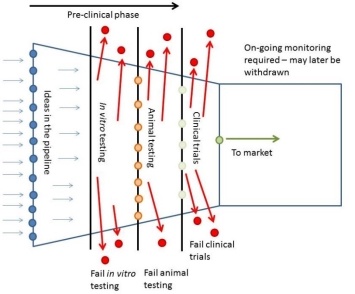
News • Tissue engineering
Growing cells in three dimensions
Tissue engineering, broadly described as the combination of cells, engineering methods and biochemical factors to create living biological tissue, is a fast-growing field that has the potential to significantly accelerate the advancement of medicine. In IDTechEx’s new report, Tissue Engineering 2018 – 2028: Technologies, Markets, Forecasts, the market for engineered living tissues is forecasted to reach $4.8 billion by the year 2028.
The most obvious application of tissue engineering is in regenerative medicine, a branch of medicine that seeks to repair or replace damaged or diseased cells and tissues. Since the late 1990s, engineered skin grafts have been used to help accelerate the healing process for patients with advanced wounds such as diabetic foot and venous leg ulcers, and serious burns. Similarly, engineered cartilage grafts have been used for over a decade to repair defects in patients’ knees. We can imagine that in the far future, patients will be able to receive engineered organs, rather than wait for a matching organ to become available for transplant.
New tissue types
In the near term, researchers continue to improve the healing ability of engineered skin and cartilage, and new tissue types are also in development. These may begin to have significant impact on improving human lives within the next 5 years. Just this year the United States Food and Drug Administration has launched a program called the Regenerative Medicine Advanced Therapy designation, which was designed specifically to expediate life-changing, if not life-saving, biological products such as engineered tissues to patients. Under such a program, we may see an even more rapid commercialization of this exciting class of therapeutic than we have previously predicted.
Though the term “tissue engineering” is closely associated with regenerative medicine, the ability to artificially create living biological tissues has much wider-reaching implications than the repair of organs. By being able to replicate native structure and recapitulate function in the laboratory setting, researchers can use these engineered tissues to safety and humanely investigate the effect of drugs and other chemicals which may potentially be toxic and harmful. In reverse, tissue engineering can be used to create models of diseased tissues so that researchers can understand the underlying mechanism of the disease and to develop an appropriate therapy.
Accelerating drug development
Using engineered tissues, pharmaceutical companies can expect to accelerate their drug development timelines and to potentially save billions of dollars in the process. Tests on engineered human tissues have the potential to replace traditional cell culture and animal studies, both of which often provide unreliable results due to dissimilarity to human physiology. By predicting the safety and efficacy of the drug in preclinical studies, resources can be focused to pursue the most promising therapeutics, and dead-ends can be identified and discarded before significant money has been invested.
Source: IDTechEx
23.12.2017











